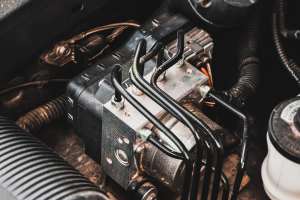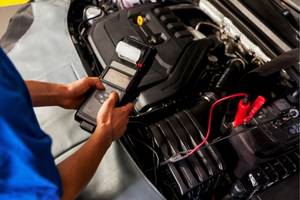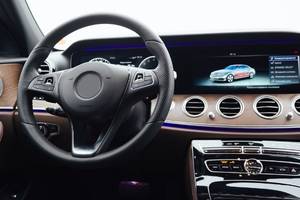Introduction
In today's rapidly advancing automotive world, enthusiasts, mechanics, and tech-savvy individuals are diving headfirst into engine control unit (ECU) programming. But what exactly is ECU programming, and how can you explore this field successfully? ECU programming involves rewriting the software in a car's computer system to optimize its performance, improve fuel efficiency, and enhance the driving experience. While it may seem difficult, with the right tools, knowledge, and patience, you can master this complicated dance between the mechanical and digital worlds. Let's break it down, one byte at a time.
1. What is Engine Control Unit (ECU) Programming?
Imagine being the conductor of an orchestra—only instead of musicians, you're commanding the various components of a car. That's essentially what engine control unit programming is all about. At its core, ECU programming is a way to rewrite the software in a car's computer system, allowing you to optimise its performance.
Engine control unit programming is like the brain's software, controlling everything from fuel injection to the timing of ignition. When these settings are improved, your car can run more efficiently, giving better gas mileage, more power, and even smooth ride.
But, don't let the technical jargon scare you. While it may sound like something out of a science fiction movie, the reality is far less stressfull. With the right tools and a bit of patience, you can become an expert in engine control unit programming. It's all about understanding what's under the hood of your car—and your computer.
Think of it this way: when you're programming an ECU, you're basically telling your car's components how to behave. You're setting the rules, telling how they interact, and fine-tuning their performance. And the best part? You don't need a degree in computer science to do it.
There's a beauty in the logic of engine control unit programming. It's a dance between the mechanical and digital worlds, a balance of code and combustion. And with a little time, the right tools, and a willingness to learn, you can take charge of this dance and make your car perform exactly how you want it to.
So, whether you're looking to improve your car's performance, reduce its emissions, or just enjoy a smooth ride, engine control unit programming could be the key. Stay tuned as we dig in deeper into the tools, techniques, and step-by-step guide to ECU programming in the next part of this series.
Stepping into the world of engine control unit programming, you'll realise it's not just about understanding the language of cars but also about having the right tools to translate your commands into action. Let's talk about the tools and software that can help you unlock the full potential of your vehicle.
Just like a skilled mechanic wouldn't be caught without their wrench set, an ECU programmer needs their set of hardware tools. The most common ones include:
OBD-II scanner: This tool reads diagnostic trouble codes (DTCs) from your car's computer. It's like a translator, helping you understand what your car is trying to tell you.
EPROM programmer: This allows you to read, write, and erase programmable read-only memory (EPROM) chips in your car's ECU. Think of it as the pen that lets you rewrite the rules of your car's performance.
J2534 pass-thru device: This device is the bridge between the ECU and your computer, allowing you to program the ECU using compliant software. It's the messenger that carries your commands from your laptop to your car's onboard computer.
Once you have your hardware sorted, it's time to look at the software side of things. Remember, you're not only playing with nuts and bolts here, but with bytes and bits too. Here are some of the most popular software tools for ECU programming:
TunerPro: This is a free, user-friendly ECU tuning software that's perfect for beginners. It's like your friendly mechanic, ready to guide you through the process.
WinOLS: For more advanced users, WinOLS offers a variety of professional features for ECU recoding. It's the seasoned pro in the garage, bringing a wealth of experience and know-how.
ECM Titanium: This software combines ease of use with advanced functionality, making it a great choice for both beginners and pros. It's the jack-of-all-trades in your digital toolbox.
Remember, like any other skill, engine control unit programming requires the right tools and practice. So, get your toolkit ready, and let's dig into the step-by-step guide to ECU programming in the next section.
3. Step-by-step guide to ECU Programming
So you've got your tools ready and you're ready to go. Let's dive right into the process of engine control unit programming.
Step 1: Backing Up Your Original ECU Data
First things first, always keep a backup of your original ECU data before making any changes. It's like creating a safety net— you'll be glad it's there if you need it.
- Connect your OBD-II scanner or J2534 pass-thru device to your car's OBD-II port.
- Use your chosen software (TunerPro, WinOLS, or ECM Titanium) to read and save a copy of your ECU's original map.
- Keep this original file safe— it's your backup plan in case anything goes wrong.
Step 2: Reading and Understanding the ECU Map
Before you start changing things, you need to understand what you're looking at. The ECU map is essentially a grid of values that control different aspects of your car's performance.
- Each point on the map corresponds to specific conditions (like engine speed and load) and the corresponding fuel injection amount.
- Spend some time getting to know the map. It's like learning a new language, where each value tells a part of the story.
Step 3: Making Changes to the ECU Map
Once you're familiar with the map, you're ready to start making improvements. But remember, small changes can have a big impact.
- Use your software to adjust the values in the map. Whether you're looking to improve fuel efficiency or increase power, this is where it happens.
- Make small adjustments and monitor the impact. It's like adding spices to a dish— a little can go a long way.
Step 4: Writing the New Data to the ECU
After you've made your changes, it's time to write the new map back to the ECU.
- Use your EPROM programmer or J2534 pass-thru device to write the new data to the ECU.
- Be patient— the process may take a few minutes.
Step 5: Testing Your Changes
Just like a chef tasting their dish before serving it, you need to test your changes before hitting the road.
- Start the car and let it idle for a few minutes.
- Listen for any unusual sounds and keep an eye on your dashboard for warning lights.
Alright, you've just completed your first engine control unit programming session! But what if something's not quite right? Let's move on to troubleshooting common ECU programming issues.
4. Troubleshooting Common ECU Programming Issues
Even seasoned pros run into hiccups with engine control unit programming. If you've hit an obstacle, don't worry. Let's sort out some common issues.
Issue 1: The Car Won't Start
If your car's refusing to start after ECU programming, it's a clear sign that something's off.
- Double-check your new ECU map. Did you make extreme changes? If so, consider calling back a bit.
- If all else fails, restore your original ECU map. Remember that safety net we talked about? This is when it comes in handy.
Issue 2: You're Seeing Warning Lights
Dashboard warning lights can be cause for concern, but they're not always a disaster.
- If you see warning lights after engine control unit programming, it's likely that the ECU is reacting to the changes you've made.
- Use your OBD-II scanner to read the fault codes. This will give you a clue about what's going wrong.
If your car isn't performing as expected or you're burning through fuel faster than usual, your ECU map may need further change.
- Review the changes you've made. Is there a correlation between your changes and the issue?
- Make adjustments as necessary but remember— moderation is key.
Issue 4: Trouble Connecting to the ECU
If you're having trouble connecting to the ECU, don't panic.
- Check your hardware. Is everything connected properly?
- Try restarting your software or using a different program. Sometimes, a fresh start can solve a lot of problems.
Remember, engine control unit programming is part science, part art. It takes practice, patience, and a bit of trial and error. But with these troubleshooting tips in your toolkit, you'll be cruising down the road to success in no time.
Conclusion
Engine control unit programming opens up a world of possibilities for enhancing vehicle performance, efficiency, and customization. By understanding the basics, having the right tools, and following a systematic approach, anyone can deal with ECU programming with confidence. Whether you're a seasoned mechanic or a tech enthusiast, the ability to fine-tune your vehicle's performance to your exact preferences is within reach. With patience and practice, you'll navigate the complexities of ECU programming and unlock your car's full potential, transforming it into a finely tuned machine that meets your every need.
FAQs on
Demystifying Engine Control Unit Programming in 2025 : Practical Steps and Techniques for Success
-
1. What is ECU programming?
Ans.
Engine control unit (ECU) programming is the process of rewriting the software in a car's computer system to optimize its performance. It involves adjusting parameters like fuel injection, ignition timing, and other settings to improve fuel efficiency, increase power, and enhance the overall driving experience.
-
2. What tools are needed for ECU programming?
Ans.
To successfully program an ECU, you'll need hardware tools such as an OBD-II scanner, an EPROM programmer, and a J2534 pass-thru device. Additionally, software tools like TunerPro, WinOLS, and ECM Titanium are essential for reading, modifying, and writing ECU data.
-
3. Is ECU programming safe for my car?
Ans.
When done correctly, ECU programming is safe and can significantly improve your car's performance. However, it's important to back up the original ECU data before making any changes and to make small, incremental adjustments to avoid damaging the engine or other parts.
-
4. Can I perform ECU programming myself, or do I need a professional?
Ans.
While ECU programming can be complex, it is possible to perform it yourself with the right tools, software, and a willingness to learn. Beginners can start with user-friendly software like TunerPro and gradually move on to more advanced tools as they gain experience.
-
5. What should I do if my car won't start after ECU programming?
Ans.
If your car won't start after ECU programming, it may indicate an issue with the new ECU map. Double-check your changes for any extreme adjustments, and consider restoring the original ECU map. Always keep a backup of the original data for such situations.
-
6. How can I troubleshoot common issues in ECU programming?
Ans.
Common issues in ECU programming include the car not starting, warning lights on the dashboard, poor performance, and trouble connecting to the ECU. To troubleshoot, check your ECU map for extreme changes, use an OBD-II scanner to read error codes, review your adjustments, and ensure all hardware connections are secure. Restarting your software or using a different program may also help resolve connectivity issues.


